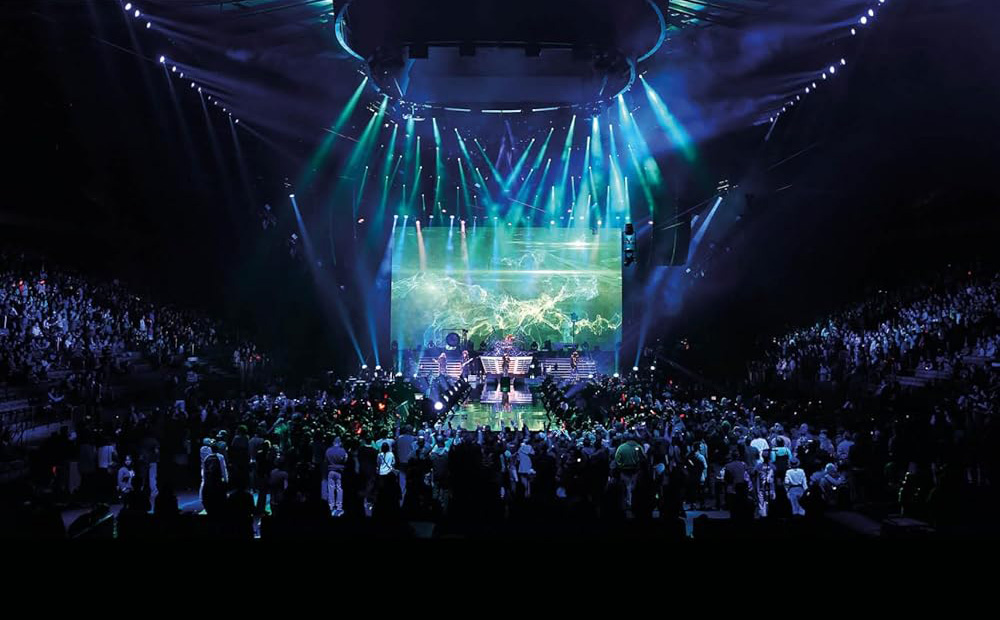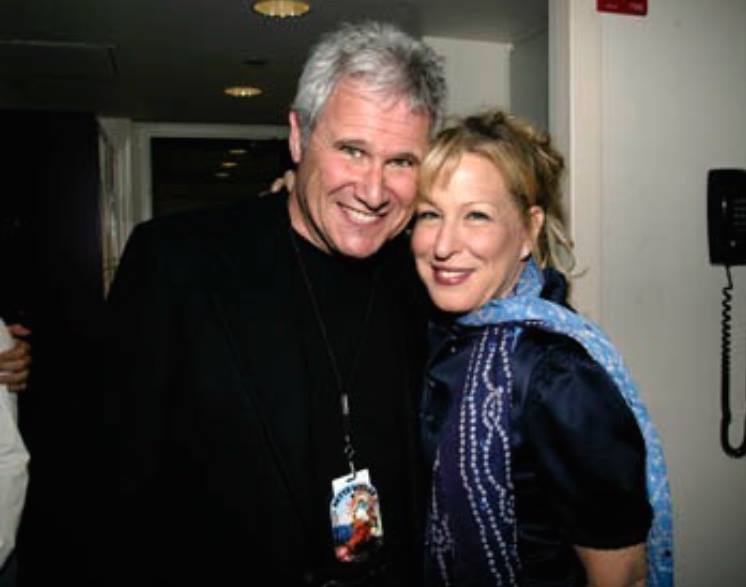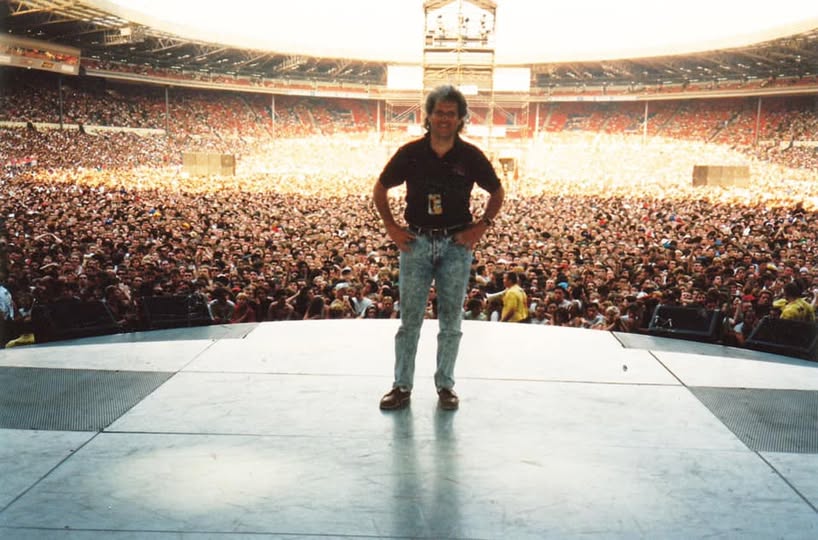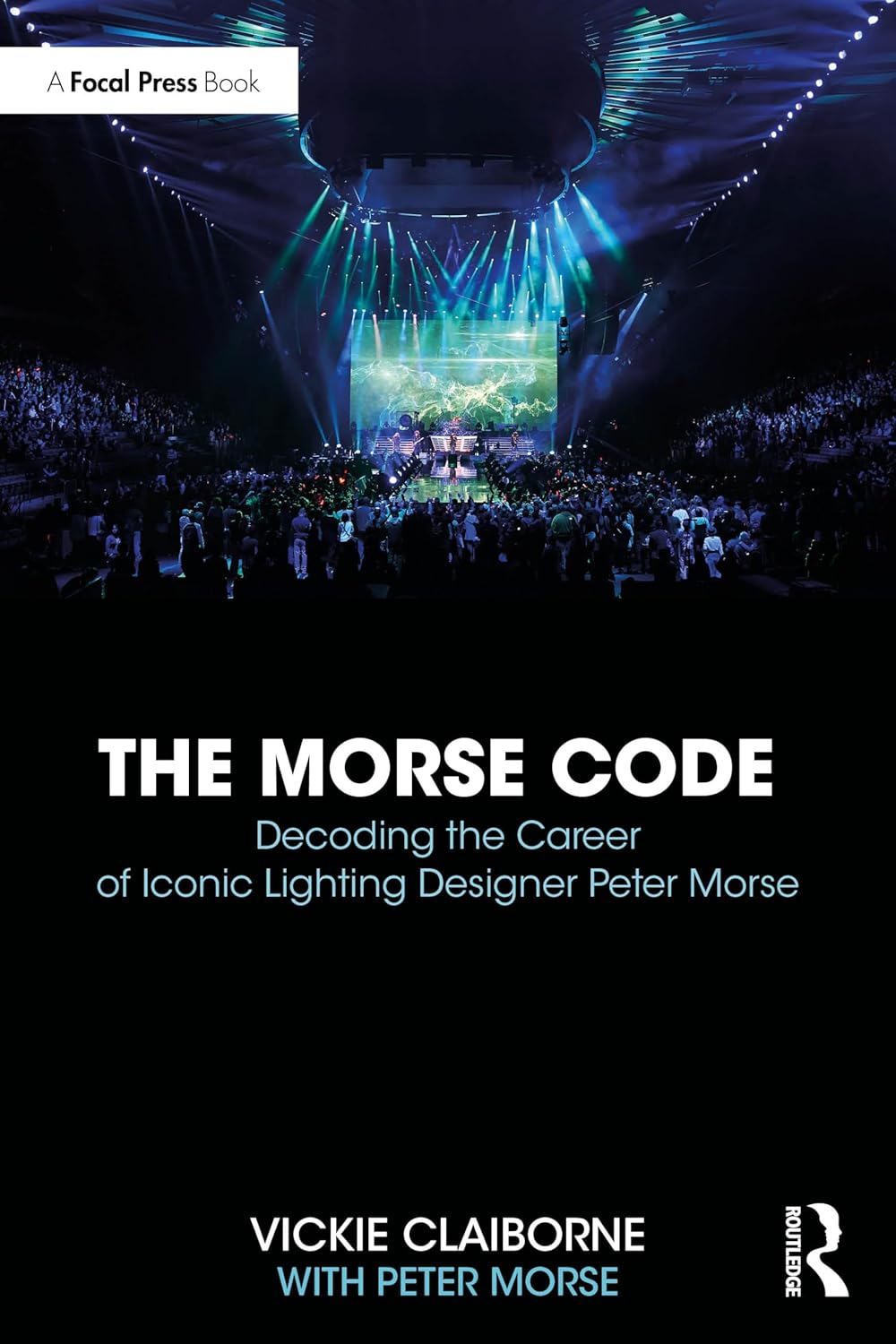Peter Morse – 5 Lessons in Light
Posted on June 2, 2025
Photo: Todd Kaplan
True to the mission of this column, this legendary designer shared five of the lessons he’s learned about lighting along the way in his career. And oh, what a career it has been! Morse’s close collaboration with Madonna and her set designer Bruce Rogers on the Drowned World tour in 2001 resulted in a seminal lighting design that set a new standard for 21st century touring productions. The Chicago-born LD and Prime Time Emmy winner has also honed his design skills working with the likes of Barbra Streisand, Bette Midler, Prince, Usher, Lionel Ritchie, Dolly Parton, Carrie Underwood, Andrea Bocelli and many other superstars.
Morse’s advice about the nitty gritty of lighting design is spot on. Reading his insights, it’s impossible not to come away wiser about the traps to avoid and creative opportunities to seize as a designer. But just as important (if not more so!) are some of the philosophical observations he made about the design process prior to sharing his five lessons.
 Before he detailed his list, we asked him what he as a designer, feels is the most important personal quality needed to be a successful concert designer?
Before he detailed his list, we asked him what he as a designer, feels is the most important personal quality needed to be a successful concert designer?
“I was about to joke and say, ‘one should not be color blind,’ but Beethoven was deaf. So, I don’t think that idea would matter!” He quipped, then on a serious noted added “I think the most important personal quality is to be observant and sensitive — observant of all motion and direction of action; and sensitive to the lyrics and music.”
“All of the performer’s message and passion is contained in the lyric, the music, and the physicality of the performance. All of this must meld in order to project the ‘poetry,’ and the lighting is a necessary component to completing the total image. The lighting may be anything from minimal to overabundant. This is only determined by being sensitive to all that the performer is attempting to transmit; and by being observant of the action that takes place on the stage as a result of the music and lyrics.”
Before listing his technical lessons, Morse left us with one final thought “Be sensitive to the artist and the performance. As a designer, you are there to illuminate an event, not create one.”

It is advice that any designer, regardless of skill level, should always remember. Now, here are Morse’s five lessons:
1.The Main Mission Of Design… In my opinion, the most important factor in a successful design is its effectiveness in complementing the artist, the music, the set. Most importantly, I feel strongly that the actual drawing is only a fraction of the overall design. The most important part is the programming and cueing. Without imaginative and thoughtful programming, and without attentive cueing, the most practical and beautiful light design is wasted. We have all experienced creative lighting that was accomplished with very small, traditional packages. In contrast we have all witnessed rather dull, unrewarding lighting when the director had all the latest technology at his fingertips, with no sense of creativity when programming or operating the system. It relies so much on the way the fixtures are “mixed” and melded into the performance.
2. Automated Lighting Doesn’t Always Need To Move To Prove It’s Worth… One must consider the numerous attributes provided by these fixtures. Given pan, tilt, color mixing, patterns —- these fixtures can be utilized to “mimic” an endless variety of fixed/stationary effects. When first working with Bette Midler, she confronted me by insisting that she never wanted to see moving lights. Bette has a strong theatrical background and feels strongly about this (as well as NO PINK on stage!!!). Due to her requests I became more aware of the endless possibilities available to me. Properly executed, a single automated spot, when preset, could mimic the look of several dozen fixtures. My knowledge of working with nothing but conventional fixtures prior to the advent of automated lighting certainly assisted in motivating me to create the many looks available from these lights.
3. Where’s The Symmetry?!? Does It Really Matter? The concept of a symmetrical focus only works if you’re sitting center house or in line with the center-point of the focus. First of all, I see no reason for seeking a symmetrical focus unless it might draw the audience’s eye to the where you might want it taken. I certainly don’t see it as applicable in any theatrical format, while it might be worth attempting in the concert format, yet still being only visually symmetrical to the programmer and/or LD.

4. Shadow Creates More Light… With the increasing use of IMAG in live performance, as well as closeup lighting needs for broadcast level playback, I’ve developed, out of necessity, an eye for texture and drama. This, I found, was attainable with the use of shadow and varied angle of key lighting. It works not just for close up on the face, but also when lighting scenic elements.
A broad wash is basically a very flat field of illumination that is best suited for a static display. Instead, by using either breakup patterns or highly directional lighting on scenic pieces, as well as soft-edged shadow on the artist’s body and face, layers appear and the actual illuminated surface far more dramatic. While shadows help make a statement, there certainly is no right or wrong in their utilization. When lighting Barbra Streisand, I found that properly placed shadows helped maintain an air of mystery, anticipation, and beauty. The viewer’s eye is very curious and always looking for more.
5. When the magic is already on the stage, the lighting should merely illuminate it… When the performance on stage merits the focus and attention, the lighting should merely serve to illuminate the action, the magic….rather than distract from it with needless movement and effects. Lighting Dance is a good example. If the performance is powerful the lighting should merely serve to support. The same can be said for any performer who is visually powerful on his or her own. Why, then, take away from that magic by building lighting accents, etc., that will only distract the audience from experiencing the event?

Of course, in the case of bands, EDM, and many rock performers, it may be a different story. In those cases, lighting serves not only to illuminate, but to fill the room with accents and direct the viewers eye where it needs to go for isolated musical moments. Afterall, the contemporary concert audience — both live and televised — does expect occasionally blown out images as well as well-timed movement and color accents that support the power and beauty of the performance. And what’s more powerful than a slow, sweeping, massive flyaway of beams to serve as visually bringing the performance to the audience? The lighting may be anything from minimal to overabundant. This is only determined by being sensitive to all that the performer is attempting to transmit; and by being observant of the action that takes place on the stage as a result of the music and lyrics. As I said, BE SENSITIVE TO THE ARTIST AND THE PERFORMANCE. THE DESIGNER IS THERE TO ILLUMINATE AN EVENT — NOT CREATE ONE.
“Be sure to check out The Morse Code by Vickie Claiborne and Peter Morse, published by Routledge Taylor& Francis Group available on Amazon and elsewhere.”